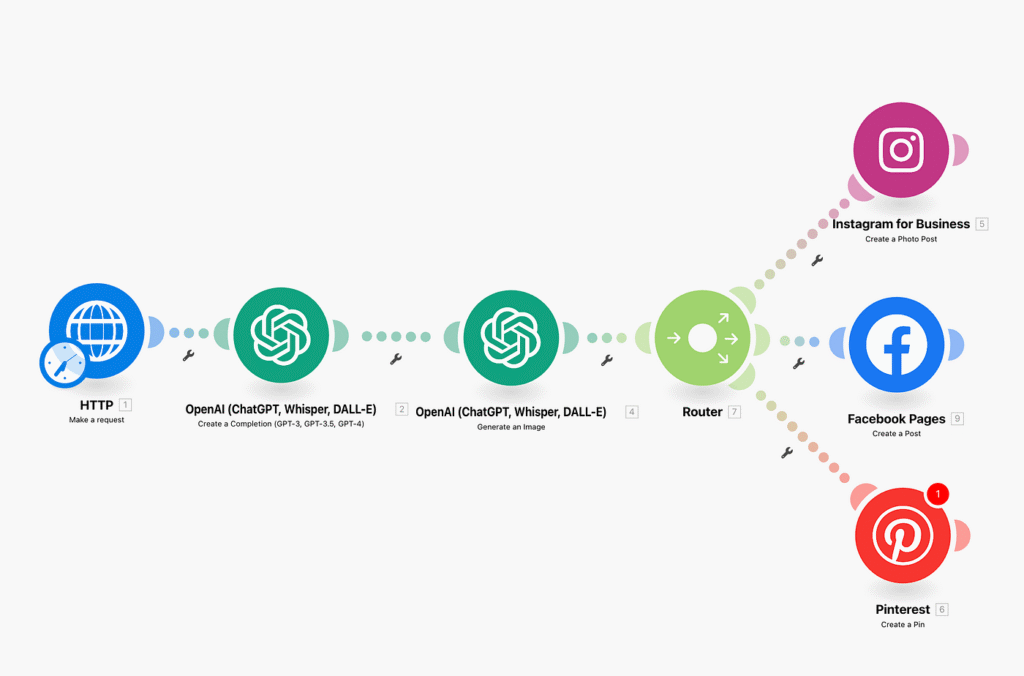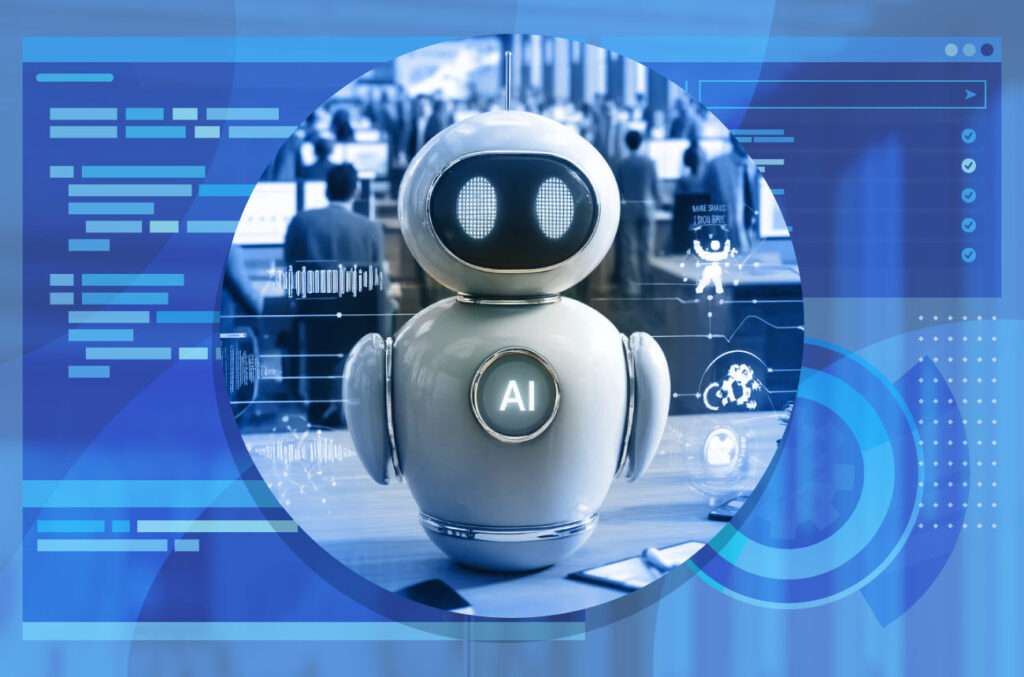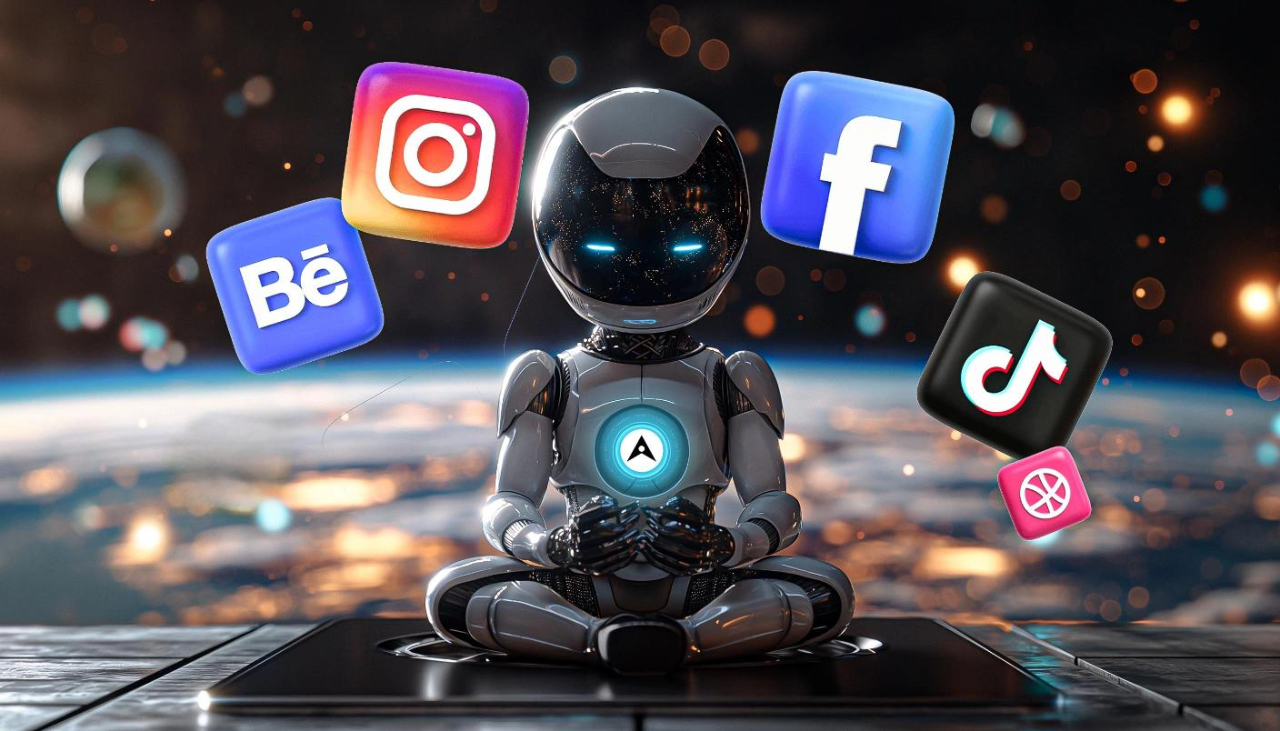Introduction: The Content Marketing Revolution is Here
Imagine producing 10x more content in half the time while maintaining quality that engages your audience and drives conversions. This isn’t a fantasy—it’s the reality of AI content creation in 2025. With 73% of marketers already using AI tools for content generation and businesses reporting up to 400% productivity increases, artificial intelligence has transformed from experimental tech to essential marketing infrastructure.
Whether you’re a solopreneur struggling to maintain consistent content output or a marketing team looking to scale without burning out, AI content creation offers unprecedented opportunities. But here’s the catch: success isn’t about replacing human creativity—it’s about amplifying it through intelligent automation.
In this comprehensive guide, you’ll discover how to build an AI-powered content strategy that delivers results, avoid the common pitfalls that waste time and money, and implement systems that work for businesses of any size. By the end, you’ll have a clear roadmap to transform your content marketing with AI tools that actually move the needle.
Section 1: Understanding AI Content Creation and Why It Matters for Modern Businesses
What is AI Content Creation?
AI content creation refers to the use of artificial intelligence technologies—primarily large language models like GPT-4, Claude, and specialized platforms like Jasper or Copy.ai—to generate written content for marketing, sales, and communication purposes. These tools use natural language processing (NLP) and machine learning algorithms trained on vast datasets to produce human-like text based on prompts and parameters you provide.
Unlike simple template-based content generators of the past, modern AI content creation tools can:
- Understand context and maintain consistent brand voice
- Generate content across multiple formats (blogs, social media, emails, ads)
- Optimize for specific audiences and marketing objectives
- Integrate with existing marketing workflows and tools
- Learn from feedback to improve output quality over time
Why AI Content Creation Matters More Than Ever in 2025

The content marketing landscape has become increasingly competitive and demanding. Consider these industry realities:
Volume Demands: The average business needs to produce 16+ pieces of content weekly across channels to maintain competitive visibility. For small teams, this pace is unsustainable without automation.
Personalization at Scale: Modern consumers expect personalized experiences. AI enables businesses to create variations of content tailored to different segments, demographics, and buyer journey stages without exponentially increasing workload.
Multi-Channel Complexity: Today’s marketing requires content adapted for dozens of platforms—each with unique formats, tones, and optimization requirements. AI tools can automatically adapt core content across channels while maintaining message consistency.
Cost Efficiency: Hiring skilled content writers costs $50-150+ per piece. AI content creation can reduce per-piece costs to under $5 while maintaining quality standards, especially for high-volume needs like product descriptions, social media posts, and email sequences.
Speed to Market: In fast-moving industries, the ability to create and publish relevant content within hours of trending topics or news events provides significant competitive advantages.
The Business Impact: Real Numbers from Early Adopters
Companies implementing AI content strategies report measurable improvements:
- Productivity gains: 300-500% increase in content output
- Cost reduction: 60-80% decrease in content production costs
- Time savings: 15-25 hours per week saved on content creation tasks
- Consistency improvement: 85% reduction in brand voice inconsistencies
- SEO performance: 40-60% increase in organic traffic due to higher content volume and optimization
Section 2: Core Benefits and Practical Use Cases for AI Content Creation
Benefit 1: Scalable Content Production Without Quality Compromise
The most immediate advantage of AI content creation is the ability to produce large volumes of content while maintaining quality standards. This scalability manifests in several practical applications:
Blog Content at Scale: AI tools can generate comprehensive blog posts, complete with research, citations, and SEO optimization. A marketing team that previously published 2-3 blogs monthly can easily scale to 8-12 without additional headcount.
Product Description Automation: E-commerce businesses with hundreds or thousands of products can generate unique, compelling descriptions automatically. Instead of copy-paste templates, AI creates distinct descriptions highlighting specific features, benefits, and use cases for each item.
Social Media Content Libraries: AI can generate months of social media content in advance, creating variations for different platforms while maintaining consistent messaging and brand voice.
Benefit 2: Enhanced Personalization and Audience Targeting

AI content creation enables personalization at a scale impossible for human teams:
Demographic Variations: Generate the same core message adapted for different age groups, geographic regions, or professional backgrounds. For example, a financial services company can create investment content tailored separately for millennials, Gen X, and baby boomers.
Buyer Journey Optimization: Automatically create content variations for awareness, consideration, and decision stages. AI understands the context and information needs at each stage, adjusting tone, detail level, and calls-to-action accordingly.
Industry-Specific Adaptations: Transform general business content into industry-specific pieces. A productivity tool’s marketing content can be automatically adapted for healthcare, legal, manufacturing, and other sectors with relevant examples and terminology.
Benefit 3: Improved SEO and Content Optimization
Modern AI content tools integrate SEO best practices and optimization features:
Keyword Integration: AI naturally incorporates primary and secondary keywords while maintaining readability and avoiding keyword stuffing penalties.
Content Structure Optimization: Automatic generation of SEO-friendly headers, meta descriptions, and content hierarchies that search engines prefer.
Topic Coverage: AI can identify content gaps and suggest comprehensive topic coverage to establish topical authority in your niche.
Benefit 4: Consistency in Brand Voice and Messaging
Maintaining consistent brand voice across content creators and channels is challenging for growing businesses. AI content creation solves this through:
Brand Voice Training: AI tools can be trained on existing content to understand and replicate your specific tone, style, and messaging preferences.
Style Guide Enforcement: Automatic adherence to brand guidelines, terminology preferences, and communication standards across all generated content.
Multi-Creator Coordination: When multiple team members use AI tools with shared brand parameters, output consistency improves dramatically compared to purely human-created content.
Benefit 5: Rapid Response to Market Opportunities
AI content creation enables businesses to capitalize on trending topics, news events, and market opportunities faster than competitors:
Trending Topic Content: Generate relevant content within hours of trending topics in your industry, positioning your brand as current and responsive.
Competitive Response: Quickly create content addressing competitor announcements, product launches, or market moves.
Seasonal and Event Marketing: Automatically generate campaign content for holidays, industry events, or seasonal trends well in advance or in real-time response to opportunities.
Section 3: Step-by-Step Implementation Guide for AI Content Creation

Step 1: Define Your Content Strategy and Objectives
Before implementing AI tools, establish clear content goals and parameters:
Content Audit and Gap Analysis:
- Review existing content performance and identify high-performing themes
- Map content to buyer journey stages and identify gaps
- Analyze competitor content strategies for opportunities
- Document current brand voice and style preferences
Goal Setting and Metrics:
- Define specific content objectives (lead generation, brand awareness, customer education)
- Establish key performance indicators (KPIs) for AI-generated content
- Set quality thresholds and review processes
- Create content calendar templates and publishing schedules
Step 2: Choose the Right AI Content Creation Tools
The AI content tool landscape offers options for different needs and budgets:
Enterprise-Level Platforms:
- Jasper: Advanced features, team collaboration, brand voice training ($49-125/month)
- Copy.ai: User-friendly interface, workflow automation, template library ($36-186/month)
- Writesonic: SEO optimization focus, bulk content generation ($19-195/month)
Budget-Friendly Options:
- ChatGPT Plus: Versatile, customizable, excellent for diverse content types ($20/month)
- Claude Pro: Strong analytical capabilities, longer content generation ($20/month)
- Rytr: Affordable option with good template variety ($9-29/month)
Specialized Tools:
- Surfer AI: SEO-optimized content with keyword research integration ($29-119/month)
- MarketMuse: Content planning and optimization with AI assistance ($149-599/month)
- Frase: Question-based content optimization and generation ($44.99-114.99/month)
Step 3: Set Up Your AI Content Creation Workflow
Template Creation and Standardization:
- Develop prompt templates for different content types (blogs, social media, emails)
- Create brand voice guidelines and examples for AI training
- Establish content review and approval processes
- Set up content calendar integration and publishing workflows
Quality Control Systems:
- Implement human review checkpoints for AI-generated content
- Create editing checklists specific to AI content common issues
- Establish fact-checking processes for claims and statistics
- Set up plagiarism and originality verification systems
Step 4: Train Your AI Tools for Brand Consistency
Brand Voice Development:
- Compile 10-15 examples of your best-performing content
- Document tone, style, and messaging preferences
- Create “voice description” summaries for AI tool training
- Test and refine AI output against brand standards
Content Templates and Frameworks:
- Develop repeatable structures for different content types
- Create prompt libraries for common content needs
- Establish keyword and SEO integration processes
- Build content variation systems for different audiences
Step 5: Integration with Existing Marketing Stack
Content Management System (CMS) Integration:
- Set up direct publishing workflows from AI tools to your CMS
- Create content staging and review processes
- Establish SEO optimization checkpoints
- Implement content performance tracking
Social Media and Email Marketing Integration:
- Connect AI tools with social media management platforms
- Set up automated email sequence generation
- Create cross-platform content adaptation workflows
- Establish engagement monitoring and response systems
Section 4: AI Content Creation Tools Comparison Table
| Tool | Best For | Pricing | Key Features | Pros | Cons |
|---|---|---|---|---|---|
| Jasper | Enterprise teams | $49-125/month | Brand voice training, team collaboration, API access | Advanced customization, excellent long-form content | Higher price point, learning curve |
| Copy.ai | Marketing teams | $36-186/month | Workflow automation, template library, integrations | User-friendly, good template variety | Limited advanced features in lower tiers |
| ChatGPT Plus | Versatile content creation | $20/month | Custom GPTs, plugin access, latest model | Highly flexible, excellent value | Requires more prompt engineering |
| Writesonic | SEO-focused content | $19-195/month | SEO optimization, bulk generation, AI art | Strong SEO features, competitive pricing | Interface can be cluttered |
| Surfer AI | SEO content optimization | $29-119/month | Keyword research integration, SERP analysis | Excellent SEO guidance, data-driven | Limited to SEO-focused content |
| Claude Pro | Analytical content | $20/month | Long-form generation, data analysis | Strong reasoning, reliable output | Limited integrations |
| Rytr | Budget-conscious users | $9-29/month | Multiple languages, tone options | Very affordable, decent quality | Fewer advanced features |
Section 5: Real User Experiences and Case Studies

Case Study 1: E-commerce Product Descriptions at Scale
Company: Mid-size outdoor gear retailer with 2,500+ products
Challenge: Unique product descriptions for SEO and conversion optimization
Solution: Implemented Jasper with custom brand voice training and product data integration
Results:
- Generated 2,500 unique product descriptions in 3 weeks (previously would take 6+ months)
- 35% increase in organic search traffic to product pages
- 22% improvement in product page conversion rates
- 85% reduction in content creation costs
Key Success Factors:
- Detailed product attribute database for AI input
- Human review process for technical accuracy
- A/B testing of AI vs. human-written descriptions
- Continuous prompt refinement based on performance data
Case Study 2: B2B Blog Content Strategy
Company: SaaS company serving small businesses
Challenge: Consistent blog publishing to support inbound marketing
Solution: ChatGPT Plus with custom GPTs for industry-specific content
Results:
- Increased blog publishing from 2 to 12 posts per month
- 180% increase in organic blog traffic within 6 months
- 45% more qualified leads from content marketing
- 70% time savings on content creation
Key Success Factors:
- Comprehensive topic research and keyword planning
- Structured prompt templates for consistency
- Subject matter expert review for technical accuracy
- Integration with content calendar and SEO tools
Case Study 3: Social Media Content Automation
Company: Digital marketing agency managing 15+ client accounts
Challenge: Consistent, branded social media content across multiple clients
Solution: Copy.ai workflows with client-specific brand voice training
Results:
- 500% increase in social media content output
- Maintained brand consistency across all client accounts
- 60% reduction in content creation time per client
- Improved client satisfaction with content variety and consistency
Key Success Factors:
- Individual brand voice profiles for each client
- Approval workflows with client review stages
- Performance tracking and optimization based on engagement data
- Regular brand voice updates based on client feedback
Expert Insights from Industry Leaders
Marketing Director at Fortune 500 Company:
“AI content creation isn’t about replacing creativity—it’s about amplifying human insight at scale. Our team focuses on strategy, messaging, and optimization while AI handles the heavy lifting of production. This allows us to test more ideas, reach more audiences, and optimize faster than ever before.”
Small Business Owner:
“As a solopreneur, AI content tools gave me back 20+ hours per week. I can now maintain a consistent blog, active social media presence, and email marketing campaigns that were impossible to manage manually. The key is setting up good systems and maintaining quality standards.”
Content Marketing Consultant:
“The biggest mistake I see businesses make with AI content is treating it like a magic button. Success requires strategy, proper tool selection, quality control processes, and continuous optimization. When done right, it’s transformative. When done poorly, it’s obvious and ineffective.”
Section 6: Advanced Strategies and Insider Tips
Advanced Prompt Engineering Techniques
The CLEAR Framework for Better AI Content:
- Context: Provide specific background information and audience details
- Length: Specify desired word count and content depth
- Examples: Include samples of preferred style and format
- Audience: Define target reader demographics and knowledge level
- Requirements: List specific elements, keywords, or calls-to-action needed
Prompt Chaining for Complex Content:
Instead of generating long-form content in one prompt, break complex pieces into stages:
- Outline generation and approval
- Section-by-section content creation
- Transition and flow optimization
- SEO and readability enhancement
Content Personalization at Scale
Dynamic Content Variables:
Use AI to create content templates with variables that automatically adjust for different:
- Geographic regions and local regulations
- Industry verticals and use cases
- Company sizes and business models
- Buyer journey stages and intent levels
Behavioral Trigger Content:
Generate content variations triggered by user behavior:
- Website page visits and time spent
- Email engagement patterns
- Social media interaction types
- Purchase history and preferences
Integration with Marketing Automation
Lead Nurturing Sequences:
Use AI to create comprehensive email sequences that adapt based on:
- Lead source and initial interest
- Engagement patterns and preferences
- Industry and company characteristics
- Sales cycle stage and previous interactions
Content Gap Identification:
Implement AI analysis to identify content gaps by:
- Analyzing competitor content strategies
- Identifying trending topics in your industry
- Monitoring customer support questions for content opportunities
- Tracking search query data for unaddressed topics
Quality Assurance and Optimization
AI Content Scoring Systems:
Develop internal scoring rubrics for AI-generated content:
- Brand voice consistency (1-10 scale)
- Technical accuracy verification
- SEO optimization completeness
- Engagement potential assessment
- Call-to-action effectiveness
Continuous Improvement Processes:
- A/B testing AI-generated vs. human-written content
- Performance tracking across different AI tools and approaches
- Regular prompt optimization based on output quality
- Feedback loops from sales and customer service teams
Emerging Trends and Future-Proofing
Multi-Modal Content Creation:
2025 brings integrated AI tools that combine:
- Text generation with image creation
- Video script writing with visual asset suggestions
- Audio content creation for podcasts and voice marketing
- Interactive content generation for enhanced engagement
AI-Human Collaboration Models:
The future of content creation involves sophisticated human-AI collaboration:
- AI handles research, outlining, and first drafts
- Humans provide strategy, creativity, and quality control
- Collaborative editing where AI suggests improvements to human content
- Real-time content optimization based on performance data
Final Section: The Game-Changing Insight Most Businesses Miss
Here’s the strategic advantage that separates AI content creation leaders from followers: treating AI as a content intelligence system rather than just a writing tool.
Most businesses use AI reactively—generating content when they need it. The real opportunity lies in using AI proactively to understand content performance patterns, predict trending topics, and optimize entire content ecosystems.
The Content Intelligence Approach:
Predictive Content Planning: Use AI to analyze historical performance data, seasonal trends, and industry patterns to predict what content will perform best in the coming months. Instead of guessing what to create, you’re working from data-driven insights about future content opportunities.
Real-Time Content Optimization: Implement AI systems that monitor content performance and automatically suggest optimizations. When a blog post starts gaining traction, AI can identify why it’s working and suggest similar content angles. When social media posts underperform, AI can analyze the elements that need adjustment.
Competitive Content Intelligence: Use AI to continuously monitor competitor content strategies, identifying gaps in their approach and opportunities for your brand to lead industry conversations. This isn’t about copying—it’s about finding white space in the market conversation.
Customer Journey Content Mapping: AI can analyze customer behavior data to identify exactly what content influences buying decisions at each stage. This enables you to create content that doesn’t just engage audiences but actively drives them toward conversion.
The businesses winning with AI content creation in 2025 aren’t just creating more content—they’re creating smarter content systems that learn, adapt, and optimize continuously. While competitors focus on individual pieces of content, leaders are building content intelligence that compounds over time.
This systematic approach transforms content marketing from a cost center into a revenue driver, with each piece of content contributing to a larger intelligence system that makes every subsequent piece more effective.
The question isn’t whether AI will transform content marketing—it already has. The question is whether you’ll use it tactically to solve immediate problems or strategically to build sustainable competitive advantages.


Leave a Reply